There are a few tricks to sawing a perfect line.
The first one, is having a saw that is straight and without warp. Get you eye close to the end and back of the saw and look to the front. Is it straight? This matters a lot. Raise you eye a bit and try to find an angle where the saw disappears behind the back of the saw. If it doesn’t then you may find a straight cut next to impossible. Some folk may be able to manage this, but then maybe not. If I look for a saw in a store, I usually reject ten saws before I see a good one. With a straight saw, a low angle cut like the one above, will let you choose where you are going.
the second most important trick is stoning, but that I will cover in another article.
The third most important trick is the mirror trick.
See the reflection in the saw? if it makes the illusion of extending the board in a straight line, you know that your saw is starting out straight up and down. Nice trick this one. As long as the cut is straight across and the top of the board is square, you can use this to make sure your aim is precise.
This can even be done for lines that are not straight, if you are clever.
So I am cutting an angle for the pounding face of a mallet. The first thing I do is make a few lines at 90 degrees to the line I am cutting.
I am using a 1-2-3 setup block to make a line square to the one I cut. A 1-2-3 block is a reference tool that I use all the time. It is square, precise and 1″ by 2″ by 3″.
When I am done I will have a few extra lines.
Now I can use the Mirror trick to cut straight up and down.
Even without a line drawn on the end, I can cut straight.
Now to clean up the surface of the cut. A shooting board is one of the best methods, but if you have not mastered the hand plane, here is a way using sandpaper on a flat surface.
First mark the end so you can tell when you are finished.
In the picture below, I have a sheet of sandpaper adhered to a flat surface. Either MDF or a granite plate will do just fine for that.
To protect the 1-2-3 block from being sanded, it is sitting on a sheet of plywood. by moving the plywood around, you can use different spots on the sandpaper.
The flat of the board is held against the 1-2-3 block and the block is square on the plywood. When I rub the board that is held against the 1-2-3 block on the sandpaper, it remains square to the flat of the board.
While working the wood down, the sandpaper can get clogged with sawdust. One method I use is to strike the sandpaper with the flat of a board. This blows the sawdust out kind of like how you would clean a chalk board eraser.
Bob
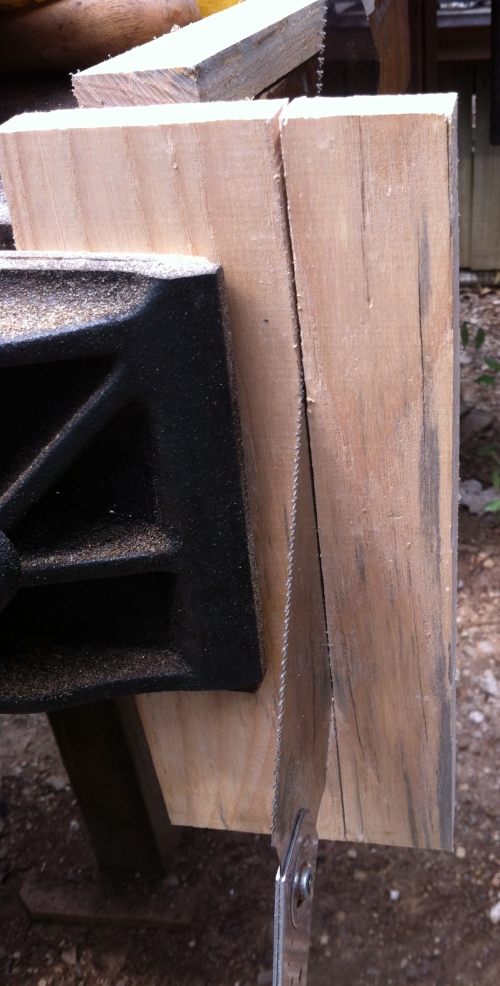
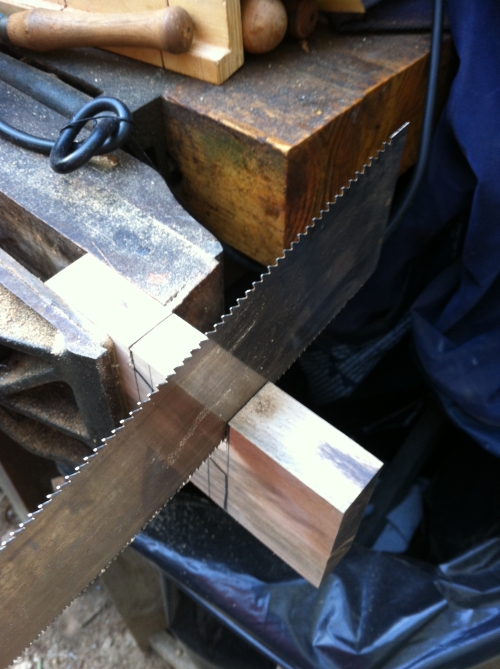
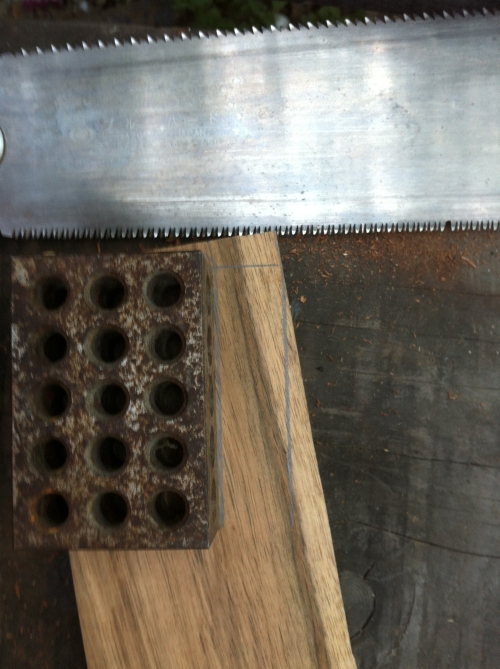
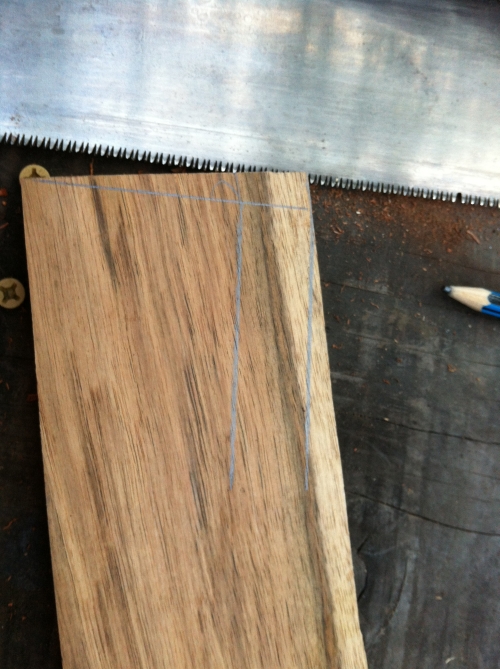
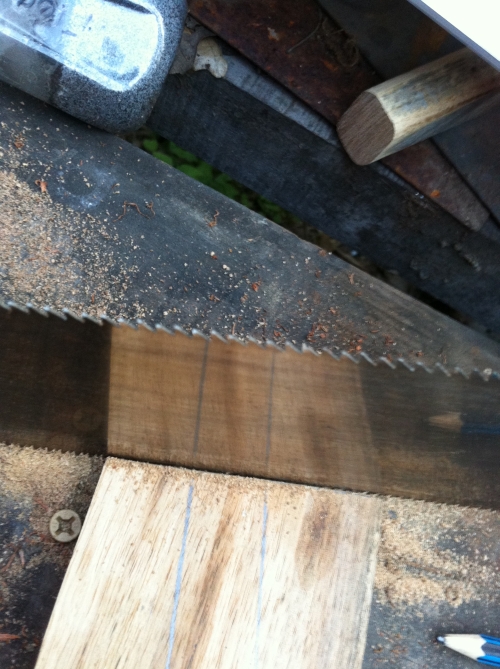
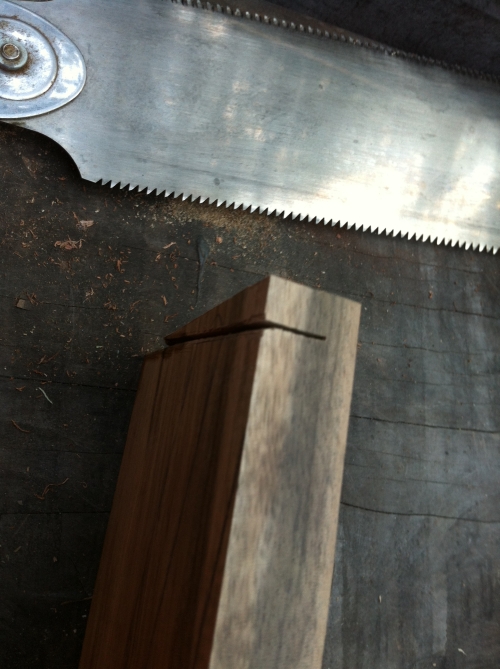
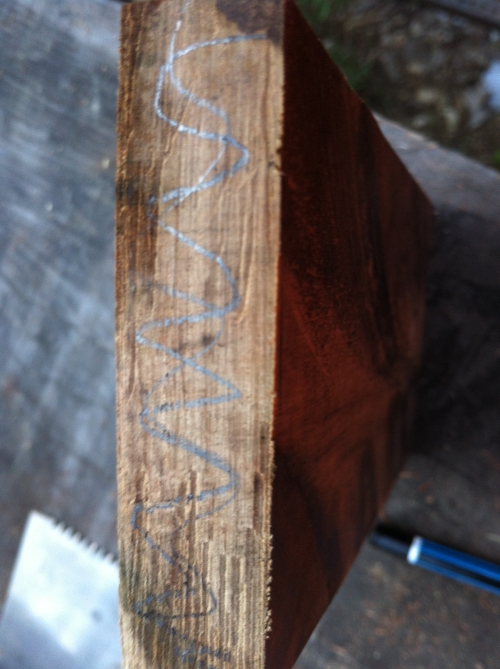
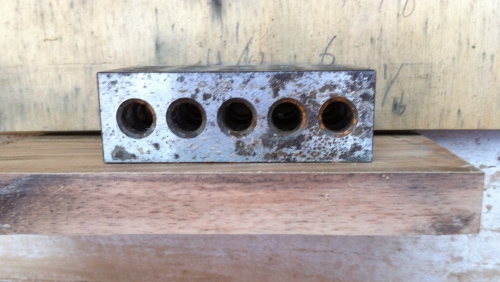
 A page Dedicated to My Writing
A page Dedicated to My Writing
I use “The Works” toilet bowl cleaner to clean up my rusty metal, I read about that from Chris Schwartz, but not my 1-2-3 block, on them I use stainless steel pot scrubbers or sand them on light paper. I once tried to hand sand enough off a piece of metal about that size so that I could tell it with a micrometer. Never got there, finally gave up.